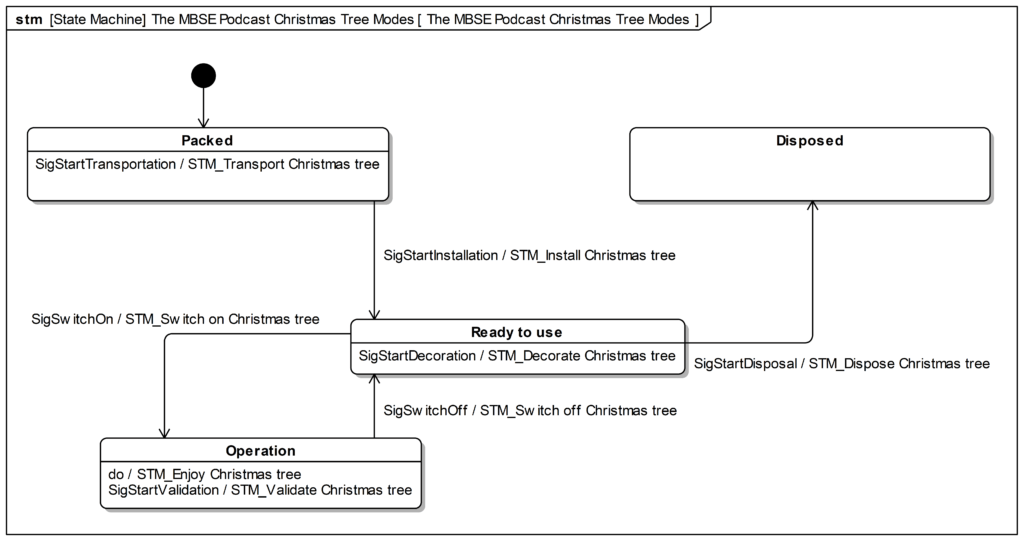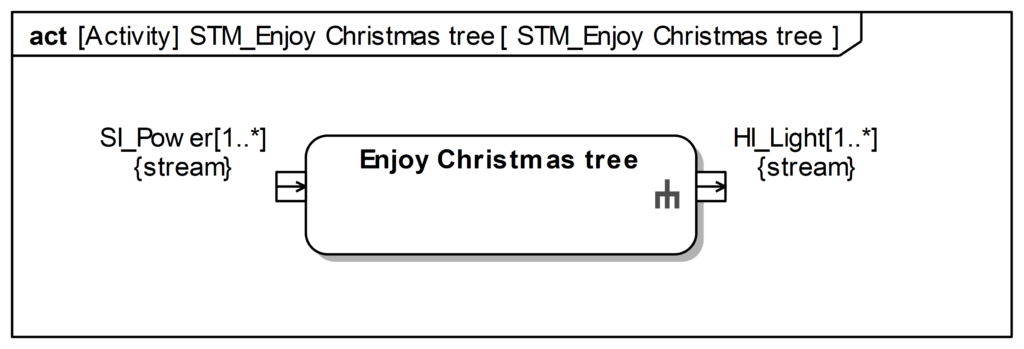Broadcast date: December 9th, 2021
You can join and
Welcome to the 9th door of our MBSE Podcast Advent Calendar. This time, we take a look at the state machines.
Here, we use a state machine to specify the top-level states of our system and with that, the pre-and post-conditions of the use cases. This state machine is owned by the system element. Let’s look at it in the model.

The state machine considers four states of the Christmas Tree: “packed”, “ready to use”, “operation”, and “disposed”.
Do you remember the triggers of our use cases? We specified a textual trigger as well as a formal signal model element. The use case trigger signals trigger the transitions in the state machine.
The use case activities are the effect of the transitions or internal behavior of the states. The special learning surprise: you cannot directly set the use case activity on a transition or a state, because they must own the activity. However, the use case activity is already owned by the use case.
The trick is to define an activity with a single call behavior action which calls the use case activity. For example, the effect of the “do behavior” of the Operation state:

The activity does not need an initial and final node. It is sufficient to just model the call behavior action.
So much for the 9th door of our MBSE Podcast Advent Calendar. We wish you a great 9th of December.
Podcast: Play in new window | Download
